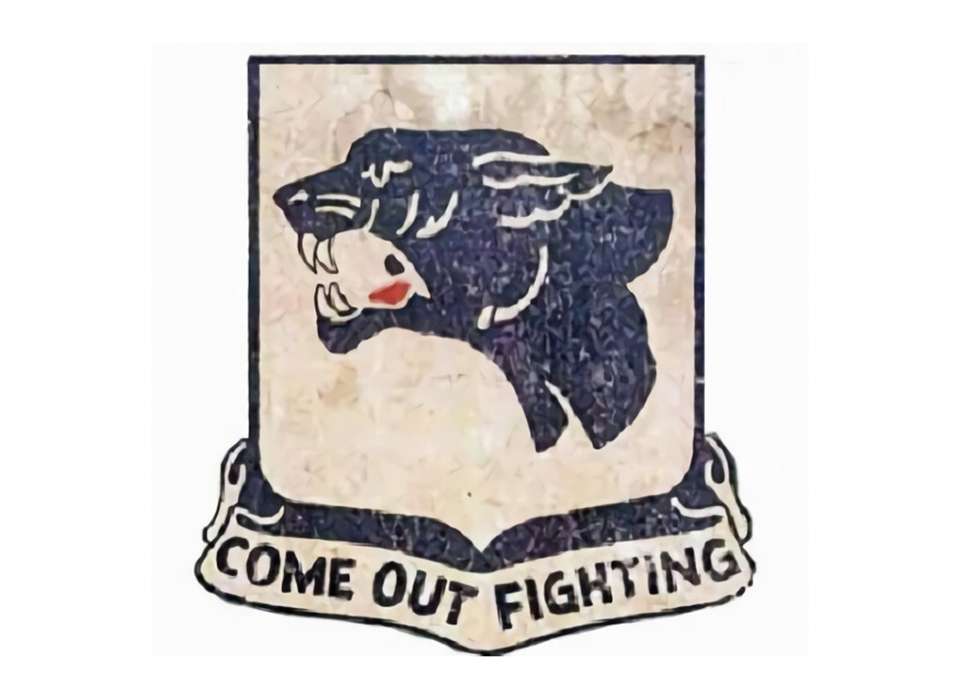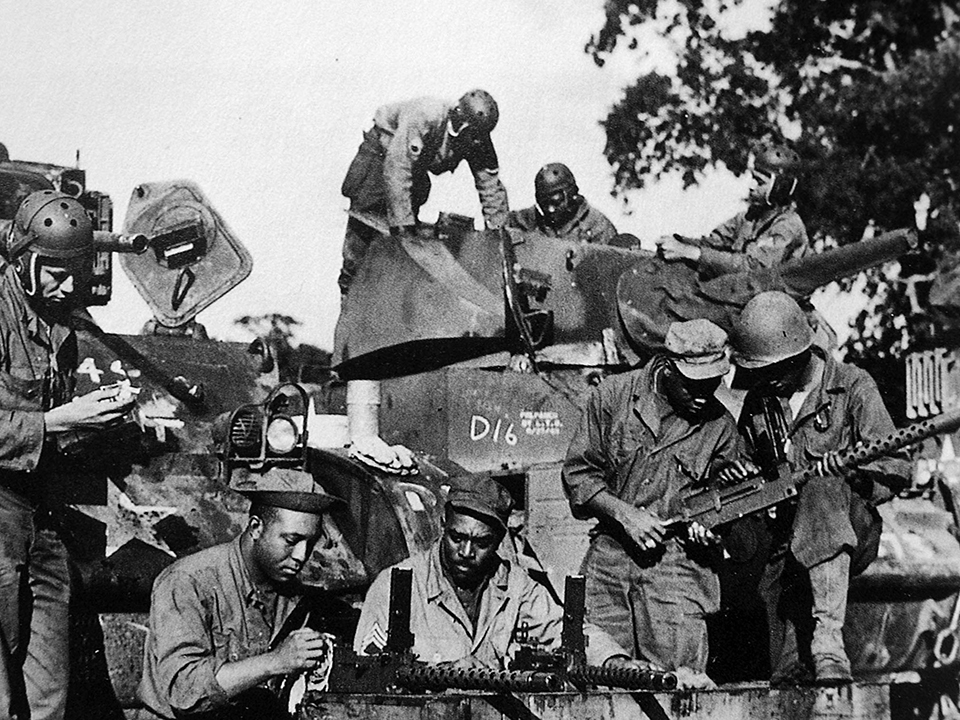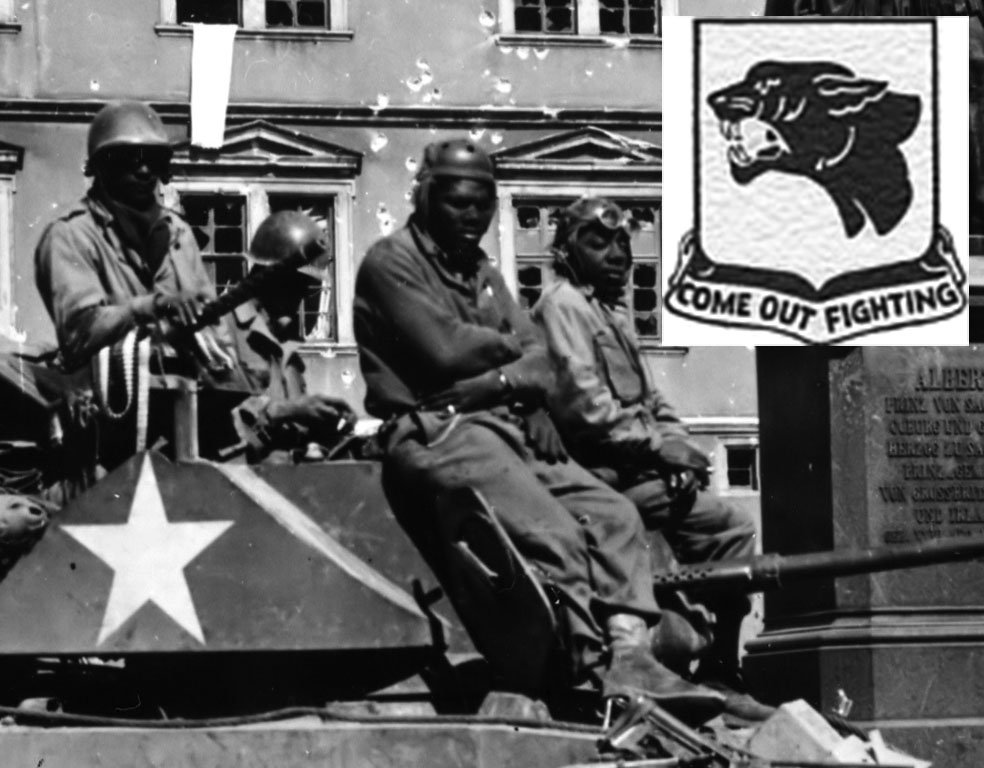
Good Morning POU!
We continue looking at the bravery and courage of the men and women who valiantly served in the military during World War II. Their accomplishments have been slighted and overlooked by HISstory, but we’re striving to change that.
Today’s post is all about the Black Panthers! The 761st Tank Battalion.

The 761st ‘Black Panther’ Tank Battalion was the first African-American armored unit to see combat. They were known as the Black Panthers after their unit’s distinctive insignia; their motto was “Come out fighting”. What the Tuskegee Airmen were to air, the Black Panthers were to land. Here is how this historic battalion came to be.
Serving with distinction, valor and honor was the easiest part of the war for black Americans in uniform – a fact too often forgotten by the history-challenged media and far too many politicians.
The hardest part was dealing with the open contempt of white commanding officers who denied them Purple Hearts and Bronze Stars, and the real danger of being lynched in uniform (as many were) when returning to America.
Before and during mobilization for World War II, officials in Washington, D.C., debated whether or not African-American soldiers should be used in armored units. Many military men and politicians believed that blacks did not have the brains, quickness or moral stamina to fight in a war.

Referring to his World War I experiences, Colonel James A. Moss, commander of the 367th Infantry Regiment, 92nd Division, stated, ‘As fighting troops, the Negro must be rated as second-class material, this primarily to his inferior intelligence and lack of mental and moral qualities.’ Colonel Perry L. Miles, commander of the 371st Infantry Regiment, 93rd Division, voiced a similar opinion: ‘In a future war, the main use of the Negro should be in labor organizations.’ General George S. Patton, Jr., in a letter to his wife, wrote that ‘a colored soldier cannot think fast enough to fight in armor.’
The armed forces embraced these beliefs even though African Americans had fought with courage and distinction in the Revolutionary War and every other war and conflict ever waged by the United States. They overlooked the fact that four regiments of the 93rd Division had served with the French during World War I and that the French government had awarded the coveted Croix de Guerre to three of the four regiments and to a company of the fourth, as well as to the 1st Battalion, 367th Infantry Regiment, 92nd Division.
Lieutenant General Leslie J. McNair, chief of the U.S. Army ground forces, was the main proponent of allowing African Americans to serve in armored units. He believed his nation could ill afford to exclude such a potentially important source of manpower. The black press, the NAACP, and the Congress of Racial Equality also placed increasing pressure on the War Department and President Franklin D. Roosevelt’s administration to allow black soldiers to serve on an equal footing with white soldiers.
In the summer of 1940, Congress passed into law the Selective Training and Service Act, which said, ‘In the selection and training of men under this act, there shall be no discrimination against any person on account of race and color.’ In October, however, the White House issued a statement saying that, while ‘the services of Negroes would be utilized on a fair and equitable basis,’ the policy of segregation in the armed forces would continue.

In March 1941, 98 black enlisted men reported to Fort Knox, Ky., from Fort Custer, Mich., for armored warfare training with the 758th Tank Battalion. The pioneer black tankers trained in light tank operations, mechanics and related phases of mechanized warfare, as enlisted men from other Army units joined their ranks.
The 5th Tank Group, commanded by Colonel LeRoy Nichols, was to be made up of black enlisted personnel and white officers. With the 758th Tank Battalion in place, two more tank battalions were needed to complete the 5th Tank Group.
On March 15, 1942, the War Department ordered the activation of the 761st Tank Battalion at Camp Claiborne, La., with an authorized strength of 36 officers and 593 enlisted men. On September 15, 1943, the 761st Battalion moved to Camp Hood, Texas, for advanced training.

There were many acts of racism against all the black battalions, including deaths of black soldiers from nearby Camp Polk and Camp Livingston who would visit Alexandria, Louisiana on weekend leave. A notable event was in March 1943, when several members of the unit were severely beaten, and another one found dead on the train tracks in Alexandria. After word spread, several members of the 761st commandeered six tanks and a half-track in an attempt to end the intimidation by the town’s citizens. Lieutenant Colonel Bates however persuaded them to cease their retaliation, and he would attempt to straighten the situation out. (click below for next page)

